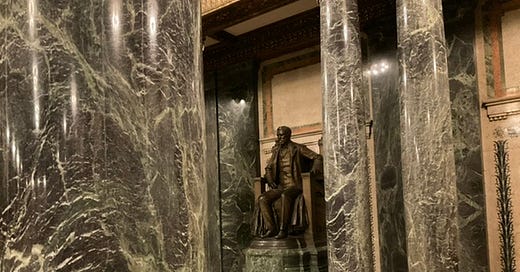Stories can come from indulging curiosity. For example, my most recent article for a Pittsburgh publication was born during a visit to the library. The visit’s purpose was a writing assignment and the goal was to conduct research. The place was a Carnegie library on Forbes Avenue near the University of Pittsburgh by the Cathedral of Learning. I’d been there before. This time, I also scheduled time to visit the adjacent Carnegie Museum of Art. I’ll write more about that later.
After finishing work at the library, I visited the art museum. I was in awe as I entered. As always—at least as usual—I gravitated toward forbidden areas. I pulled knobs on locked doors, wandered into restricted areas and came upon what looked like an opulent entrance hall. I had read that a certain statue was located in the art museum. I found myself searching for a statue of the institution’s namesake.
Keep reading with a 7-day free trial
Subscribe to Autonomia to keep reading this post and get 7 days of free access to the full post archives.




